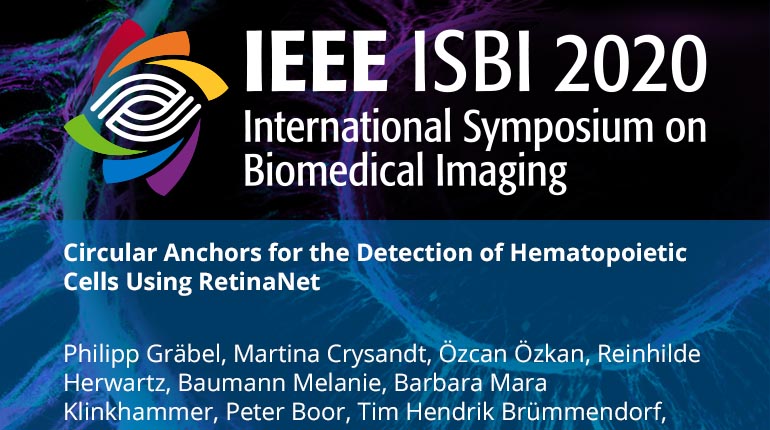
Already purchased this program?
Login to View
This video program is a part of the Premium package:
Circular Anchors for the Detection of Hematopoietic Cells Using RetinaNet
- IEEE MemberUS $11.00
- Society MemberUS $0.00
- IEEE Student MemberUS $11.00
- Non-IEEE MemberUS $15.00
Circular Anchors for the Detection of Hematopoietic Cells Using RetinaNet
Analysis of the blood cell distribution in bone marrow is necessary for a detailed diagnosis of many hematopoietic diseases, such as leukemia. While this task is performed manually on microscope images in clinical routine, automating it could improve reliability and objectivity. Cell detection tasks in medical imaging have successfully been solved using deep learning, in particular with RetinaNet, a powerful network architecture that yields good detection results in this scenario. It utilizes axis-parallel, rectangular bounding boxes to describe an object's position and size. However, since cells are mostly circular, this is suboptimal. We replace RetinaNet's anchors with more suitable Circular Anchors, which cover the shape of cells more precisely. We further introduce an extension to the Non-maximum Suppression algorithm that copes with predictions that differ in size. Experiments on hematopoietic cells in bone marrow images show that these methods reduce the number of false positive predictions and increase detection accuracy.
Analysis of the blood cell distribution in bone marrow is necessary for a detailed diagnosis of many hematopoietic diseases, such as leukemia. While this task is performed manually on microscope images in clinical routine, automating it could improve reliability and objectivity. Cell detection tasks in medical imaging have successfully been solved using deep learning, in particular with RetinaNet, a powerful network architecture that yields good detection results in this scenario. It utilizes axis-parallel, rectangular bounding boxes to describe an object's position and size. However, since cells are mostly circular, this is suboptimal. We replace RetinaNet's anchors with more suitable Circular Anchors, which cover the shape of cells more precisely. We further introduce an extension to the Non-maximum Suppression algorithm that copes with predictions that differ in size. Experiments on hematopoietic cells in bone marrow images show that these methods reduce the number of false positive predictions and increase detection accuracy.
 Cart
Cart Create Account
Create Account Sign In
Sign In





